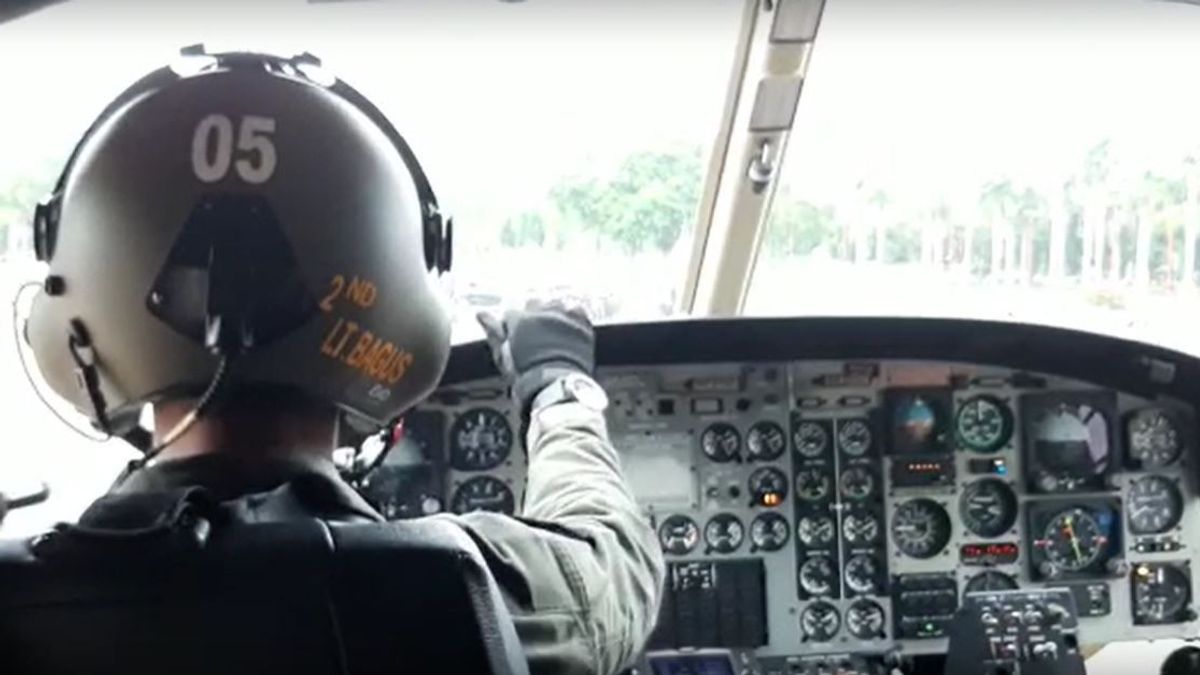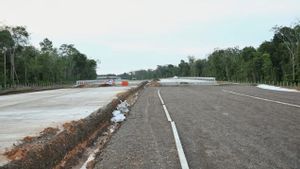
Jakarta - The rain occurred from Tuesday, December 31, 2019 to Wednesday morning, January 1, 2020. The rain intensity was the worst in the last 24 years. As a result, Jakarta and a number of surrounding areas were flooded. This afternoon, we joined the National Disaster Management Agency (BNPB), following the Ciliwung River from the air, seeing how bad the water was soaking today.
We arrived at the National Monument Square (Monas) at around 15:15 WIB. At that time, TNI helicopters were on standby. The propellers have recently been used to fly back and forth to monitor the distribution of floods in the capital. This time, for the same purpose, we entered the helicopter cabin painted dark green. About 15 minutes later, the helicopter took off.
[Click to Taste]
From the north, the helicopter took us straight to the southern tip of Jakarta. Jagakarsa is the first point that we monitor. The Ciliwung River was seen snaking mightily below us. Brown in color, the body was filled with overflows that flowed unstoppably from the upstream.
Along the side, green trees were seen growing. Around the tree, the buildings stood under siege. In Jagakarsa, we saw a number of water immersion points around the Ciliwung River. This condition was maintained until we entered the Pasar Minggu area.
After Pasar Minggu, the pilot directed the helicopter to hover over the Cijantung area. At that point, we saw conditions that were not much different. Water immersion was seen at several points of settlements and roads. Next, we moved towards Manggarai and Kampung Pulo. From here, we realized, the further north, the impact of the floods was getting worse.

At the Manggarai Water Gate, water appears to be stuck in large volumes. Garbage can be seen being transported by heavy equipment to the mainland. Leaving Manggarai Water Gate, we moved to Kelapa Gading, North Jakarta. There, the water immersion points are much more severe than in any other area we have come across. The water seems to have started reaching the roofs of the residents' houses.
The findings so far indicate that the Ciliwung River water flow originating from Bogor and moving to the North Jakarta area is one of the causes of today's flooding. These findings also lead us to conclude that the shipment of water from Bogor has not yet arrived in Jakarta. At least until the monitoring we do around 3:00 p.m. to 4:00 p.m. WIB.
Just started
From Kelapa Gading, we returned to Monas. After the flight for about 30 minutes, we took the time to chat with our flight pilot, Major CPN Athenius Murip. He explained that the flight we had just done was monitoring the Ciliwung River flow path. This monitoring is important considering that water sent from Bogor is one of the main causes of today's floods.
"Indeed, the river has begun to widen after the rain has stopped. That may be a shipment from above that is expanding. So, it spreads to residential villages adjacent to the Ciliwung River. That is what can be seen from above," he told VOI at Monas, Wednesday, January 1.

After talking with Athenius, we approached the press conference held by BNPB together with DKI Jakarta Governor Anies Baswedan and a number of related authorities. Anies warned people around the Ciliwung River to be vigilant because water shipments from Katulampa Dam in Bogor will arrive in Jakarta at around 18.00 WIB.
"But this afternoon at around 12.00 WIB, the highest point in Katulampa shows a quite alarming number. We predict that it will be around six o'clock (afternoon) and a few hours later all residents living in the Ciliwung River basin, in particular, must be on alert," he said. Anies.
The authorities agreed that today's flood was far from over. In fact, the flood season had just started. Anies' statement was strengthened by the data released by BPBD at around 13.00 WIB, two hours before we flew with BNPB. In that data, BPBD detailed the water level at the Depok Monitoring Post to reach Alert I status with a height of 400 cm at 13.00 WIB.
In addition, the Alert I status also occurred at the Rubber Monitor Post, Central Jakarta and North Jakarta Angke Hulu, with water levels reaching 660 cm and 340 cm respectively. The danger of flooding is not only for Jakarta. Several areas of Tangerang and Bekasi were observed to be submerged.
#TinggiMukaAirUPDATE HIGH ADVANCE WATER Wednesday, January 1, 2020. until 13.00 WIB Source: DKI Jakarta Water Resources Agency #DiniDiniJKT #JAKI #PerluTahu pic.twitter.com/iqZYqCl1n1
- BPBD DKI Jakarta (@BPBDJakarta) January 1, 2020
The English, Chinese, Japanese, Arabic, and French versions are automatically generated by the AI. So there may still be inaccuracies in translating, please always see Indonesian as our main language. (system supported by DigitalSiber.id)












